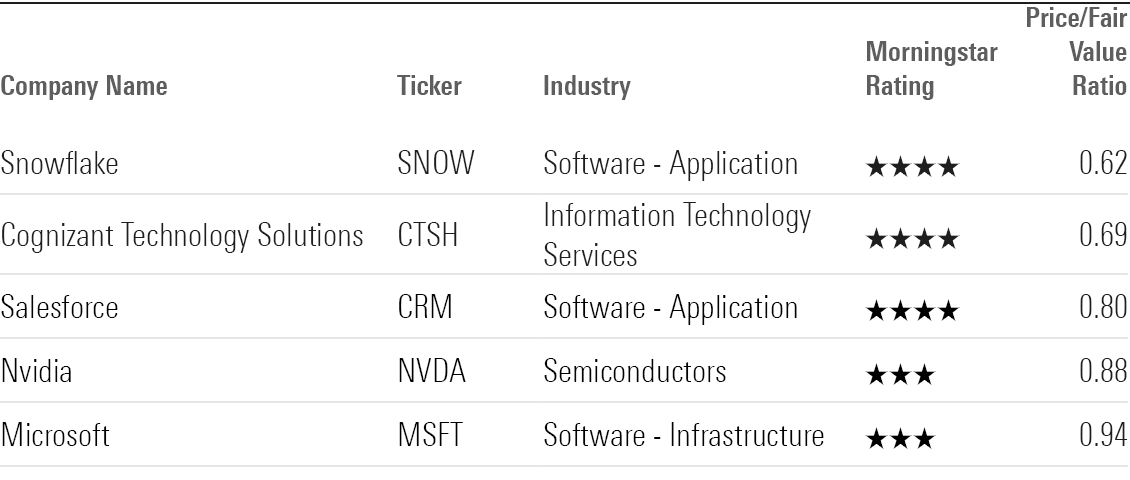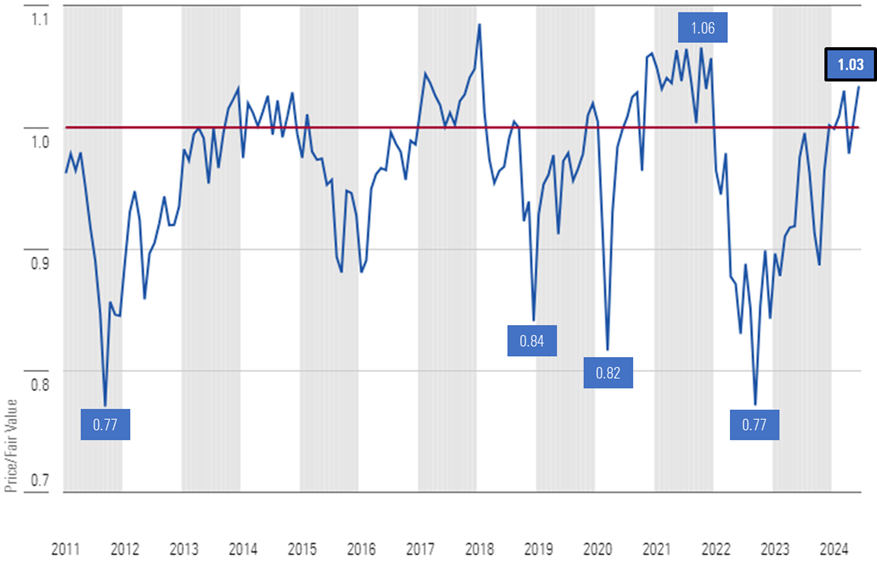20 Great Suggestions For Deciding On AI Stock Picker Platform Sites
20 Great Suggestions For Deciding On AI Stock Picker Platform Sites
Blog Article
Top 10 Tips For Evaluating The Market Coverage Provided By Ai Trading Platforms That Predict/Analyze The Performance Of Stocks.
Market coverage is among the most important aspects to take into consideration when looking at AI-based trading platforms. This determines how many markets and assets are accessible. Platforms with extensive market coverage allow you to diversify your portfolio and explore opportunities across the globe as well as adapt to different trading strategies. Here are the top ten tips to assess the market coverage offered by these platforms:
1. Evaluate Supported Asset Classes
Stocks: Make sure that the platform contains stocks from the top stock exchanges, such as NYSE, NASDAQ and LSE.
ETFs - Check to see the platform you use supports an extensive selection of ETFs offering exposure to a variety of various sectors, regions, or themes.
Options and Futures: Check whether the platform is compatible with derivatives such as options futures, options and other products with leverage.
Forex and commodities. Find out if the platform provides forex pairs, precious and base metals, energy products, and agricultural commodities.
Check that the platform works with major cryptocurrencies, such as Bitcoin and Ethereum and other currencies.
2. Check Geographic Coverage
Global markets: The platform must be able to cover the major global markets, including North America and Europe, Asia-Pacific and emerging markets.
Focus on regional markets: Find out if the platform focuses on particular markets or regions that are aligned to your business goals.
Local exchanges: Verify whether your platform is compatible with regional and local exchanges relevant to your business or your strategy.
3. Examine Real-Time against. Data that is delayed
Real-time data - Ensure that your platform is able to provide real-time market information to aid you in making quick decisions, especially for traders who are active.
Delayed data - Check whether delayed data is available for free or available at a cheaper cost. This may be sufficient to investors who want to invest over the long run.
Latency of data. Check to see if your platform minimizes the latency of real-time data feeds.
4. Evaluate Historical Data Availability
Depth of historic data Check that the platform has ample data (e.g. over 10 years old) for backtesting.
Granularity: Check if historical data include intraday, daily, weekly, and monthly granularity.
Corporate actions: Make sure that the historical data taken into account splits in stock (if applicable), dividends and other corporate actions.
5. Review market depth and order data
Level 2 data: Ensure that the platform offers Level 2 information (order book depth) to facilitate price search and execution.
Bid-ask Spreads: Ensure that the platform is showing real-time spreads for bid and request for the most accurate pricing.
Volume data: Check if the platform includes specific volume data to analyze liquidity and market activity.
6. Review the coverage of Indices and Sectors
Major indices: Ensure that your platform can support major indices like the S&P 500 (e.g. NASDAQ 100 or FTSE 100), for benchmarking using indexes.
Sector-specific data for focused analysis, verify whether the platform contains data for certain industries (e.g. technology, health care technology).
Customized indexes. Determine if your platform allows you to create and track custom indexes on the criteria that you set.
7. Evaluate integration with News and Sentiment
News feeds - Make sure the platform integrates live news feeds with news that are market-moving from reliable (e.g. Bloomberg or Reuters) sources.
Sentiment analysis Find out whether your platform offers sentiment analysis tools that utilize data from news, social media, sources, or any other sources of data.
Event-driven strategy: Verify that the platform supports the use of event-driven trading strategies (e.g. announcements of earnings economic reports).
8. Verify Multi-Market Trading Capability
Cross-market trading: Make sure the platform supports trading on different asset classes, markets and exchanges via one interface.
Conversion to currencies: Make sure the platform offers multi-currency and automated conversion of currencies to facilitate international trade.
Time zone support: Determine whether the trading platform you are using is compatible with different timezones for markets across the globe.
9. Assessment of Alternative Data sources
Look for other data sources.
ESG data: Check whether the platform has environmental social, governance, and (ESG) data for socially responsible investment.
Macroeconomics data: for a more fundamental analysis, ensure the platform contains macroeconomic indicators such as GDP (gross domestic product), inflation rates and interest rates.
Check the User Feedback and Market Reputation
User feedback: Use reviews from users to assess the reliability of the platform and market coverage.
Find out the reputation of the platform in terms of its coverage and awards.
Testimonials and case studies They will showcase the performance of the platform in particular market segments or asset classes.
Bonus Tips
Trial period: Take advantage of a free trial or demo to evaluate the market coverage as well as data quality.
API access Make sure to check whether the API of the platform supports an analysis that is custom made using market data.
Customer support. Make sure that the platform will provide assistance with regard to market or data queries.
With these suggestions using these tips, you will be able to accurately assess the coverage of AI software for stock prediction and analyzing trading platforms. You can then choose the trading platform that gives you the market and the data you require for successful trades. Market coverage that is comprehensive allows you to diversify your portfolio, explore new possibilities, and adjust to the changing market conditions. View the most popular discover more for best ai for trading for more advice including investment ai, market ai, options ai, chatgpt copyright, ai stock market, ai for stock trading, ai investing platform, trading with ai, ai stock trading app, best ai trading app and more.
Top 10 Suggestions For Assessing The Ai Trading Platforms' Educational Resources
It is crucial for investors to review the educational tools that AI-driven trading platforms and stock prediction platforms so that they can understand how to utilize the platform effectively, comprehend results and make informed decisions. Here are 10 top tips for evaluating the value and quality of these resources.
1. Comprehensive Tutorials, Guides and Instructions
TIP: Make sure the platform has tutorials that guide you through each step or guides for advanced and beginner users.
The reason: Clear directions allow users to be able to navigate the platform.
2. Webinars, Video Demos, and Webinars
Check out video demonstrations, webinars or live sessions.
Why? Visual and interactive content can make complex concepts easier for you to understand.
3. Glossary
Tips: Make sure the website offers glossaries with definitions and the most important terms in AI, finance and other fields.
Why? This can help beginners understand the language used in the platform.
4. Case Studies and Real-World Examples
Tip: Check to see whether the AI platform offers cases studies or real-world examples of AI models.
What's the reason? Examples of the capabilities of the platform and its applications are offered to aid users in understanding the platform's capabilities.
5. Interactive Learning Tools
TIP: Look for interactive features like games and sandboxes.
Why Interactive tools are the best way to study and test your knowledge without having to risk money.
6. Content that is regularly updated
Be aware of whether the educational materials are frequently updated in order to reflect the latest trends in the market, as well as developments in technology or regulatory changes.
Reason: Misleading or out of date information can lead to miscommunications and even incorrect usage of the platform.
7. Community Forums and Support with
Search for forums that are active in communities or support groups that allow members to share their thoughts and ideas.
Why Peer support and expert guidance can improve learning and solving problems.
8. Accreditation or Certification Programs
See whether there are any accreditation programs or training courses that are accredited offered by the platform.
What is the reason? Recognition of formality will increase trust and inspire learners to pursue their education.
9. Usability, Accessibility, and User-Friendliness
Tip. Check if the educational materials you are making use of are readily available.
The reason: Accessibility allows users to study according to their own pace.
10. Feedback Mechanism for Educational Content
Check whether the platform allows users to give comments about the materials.
Why: User feedback improves the quality and value.
Different learning formats are offered.
To accommodate different tastes, ensure the platform provides a variety learning formats.
By evaluating these aspects carefully and carefully, you will be able to determine whether you are satisfied with the AI stock trading platform and prediction software provides you with robust educational materials that will enable you to fully utilize their potential and make educated decisions. Read the best ai share trading recommendations for more info including ai copyright signals, ai tools for trading, ai investment tools, ai software stocks, how to use ai for stock trading, chart analysis ai, free ai tool for stock market india, free ai tool for stock market india, ai stock predictions, best ai trading platform and more.